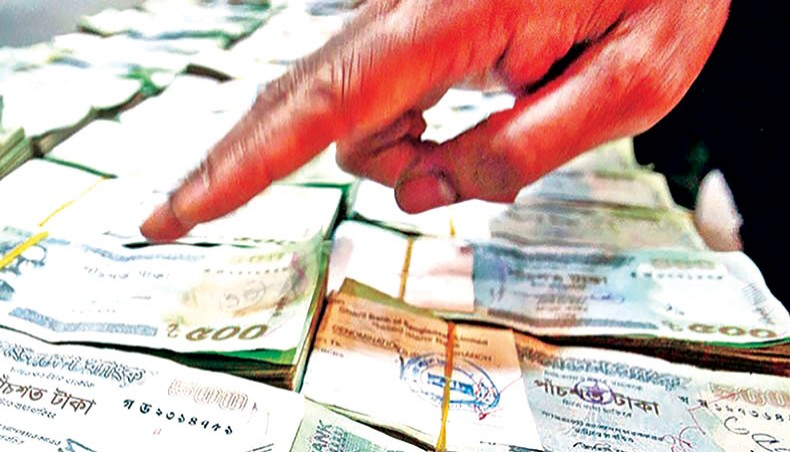
The term interbank call money market is used to describe a call money market for institutions collectively. Banks do not just employ it. The interbank call money market is a short-term money market that enables major financial institutions, including banks, mutual funds, and businesses, to borrow and lend at interbank rates, or the percentage of interest banks charge one another when they borrow money.
Loans made in the call money market are typically for a week or less and are frequently used to help banks achieve reserve requirements. The interest rate that applies to the interbank call money market is also known as the inter-bank call rate. The average call rate adjusted for transaction values is known as the AWCMR. The CBSL calculates it and makes it public every working day.
Maintaining the temporary interest rates and reducing liquidity risk in any banking system depends on the inter-bank money market operating in an organized manner. Interbank call rates shouldn't often fluctuate, even within the bounds of the standing rate corridor. This could cause greater volatility in other market rates and pricing that utilize call rates as a reference. By actively managing market liquidity, the Central Bank of Sri Lanka (CBSL) supports the stability of the money market by offering standing lending and deposit facilities at the appropriate policy rates.
Maintaining stability in the money market is the goal of monetary policy execution. Open market operations are used to carry out the monetary policy. That is, through:
- Offering standing facilities
- Enforcing the statutory reserve requirement (SRR)
- Moral persuasion
The Central Bank of Sri Lanka (CBSL) works to maintain the Inter-Bank Call Rate (the Call Rate) inside the Standing Rate Corridor at a targeted level with fewer swings to accomplish this (SRC). The intended call rate level is established in accordance with the requirements of the monetary policy.
Money Market's Interbank Sector
 The term interbank loan market indicates a subdivision of the money market trading between banks. A financial sector called the money market allows for the lending and borrowing of money for up to one year. People use assets from the money market or particularly liquid temporary debt securities to purchase and sell money. These products are considered cash equivalents due to their high liquidity and low transaction costs on the market. They typically have three months or fewer maturities and are frequently issued in at least 1 million quantities. Although almost all money market securities have accessible secondary markets, investors can liquidate their positions before they mature. An over-the-counter (OTC) is the market product.
The term interbank loan market indicates a subdivision of the money market trading between banks. A financial sector called the money market allows for the lending and borrowing of money for up to one year. People use assets from the money market or particularly liquid temporary debt securities to purchase and sell money. These products are considered cash equivalents due to their high liquidity and low transaction costs on the market. They typically have three months or fewer maturities and are frequently issued in at least 1 million quantities. Although almost all money market securities have accessible secondary markets, investors can liquidate their positions before they mature. An over-the-counter (OTC) is the market product.
In several market product categories, banks are major players. To keep up with bank rates and manage daily credit demands, banks regularly acquire short unsecured loans on the federal funds market. Banks can use the Eurodollar market for loans with a longer maturity. The term "Eurodollar" refers to dollar deposits held by financial institutions based in countries other than the United States. US banks can raise money on the Eurodollar market with their subsidiaries and abroad operations.
A different alternative is to publish sizable certificates of deposit (CDs). This certificate from the bank confirms that a certain sum of money has been deposited for a certain time period and will be repaid at maturity, together with interest. The alternative source of funding is repurchasing agreements. When a borrower sells assets to a lender, with the agreement to buy those same securities or comparable ones at a later date, at the same or a higher price, and with or without interest, the sale and purchase of those securities are called a repurchase agreement (Repo). Repos is a secured and collateralized loan; on the other hand, a federal fund loan is unsecured.
The Importance of Interbank Lending to the Global Financial System
To support the system of fractional-reserve banking
In order to cover the costs of depositors' short-term withdrawal requests, the "net-lender" bank must earn money and transfer that money to another bank, which requires borrowing. Since the original money is moved to a different financial institution, this happens. The need for interbank lending for this purpose would decrease if there were (theoretically) just one commercial bank. Then, every new credit (amount of money) would be placed in that bank (or stored as physical cash outside of it). (Under a fractional reserve banking paradigm, the problem of a bank "run" would still need to be addressed.)
A supply of money for banks
Interbank loans are essential for a successful and working banking system. Due to restrictions like reserve requirements, banks may experience a lack of cash at the end of the day. Banks can smooth over these brief cash shortages and lower "funding cash risk" by using the interbank market.
Liquidity risk in funding
Risk associated with a financial institution's long-term ability to meet its obligations is known as financing liquidity risk. As their business model depends on backing long-term loans with short-term deposits and other obligations, banks are especially susceptible to this form of risk. Because of the ease and low cost with which loans may be obtained in the interbank lending market, it can assist in reducing the danger of providing liquidity. When interbank markets are inadequate or under pressure, banks are more vulnerable to the financing liquidity risk, which can, in extreme cases, lead to insolvency.
Conclusion

The interbank, called the financial sector, refers to a monetary system where significant financial organizations can take out and lend funds at interbank rates for very short periods. Moreover, this interbank call money market helps commercial banks meet their immediate liquidity needs overnight by easing lending and borrowing between banks. These relatively short-term transactions represent the supply and demand for liquidity. The majority of interbank loans have maturities of one week or less. These loans are given out at interbank interest rates.



